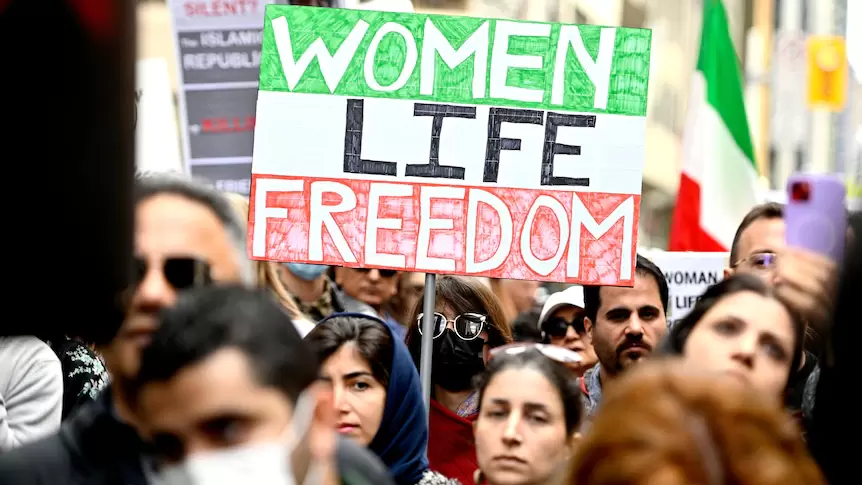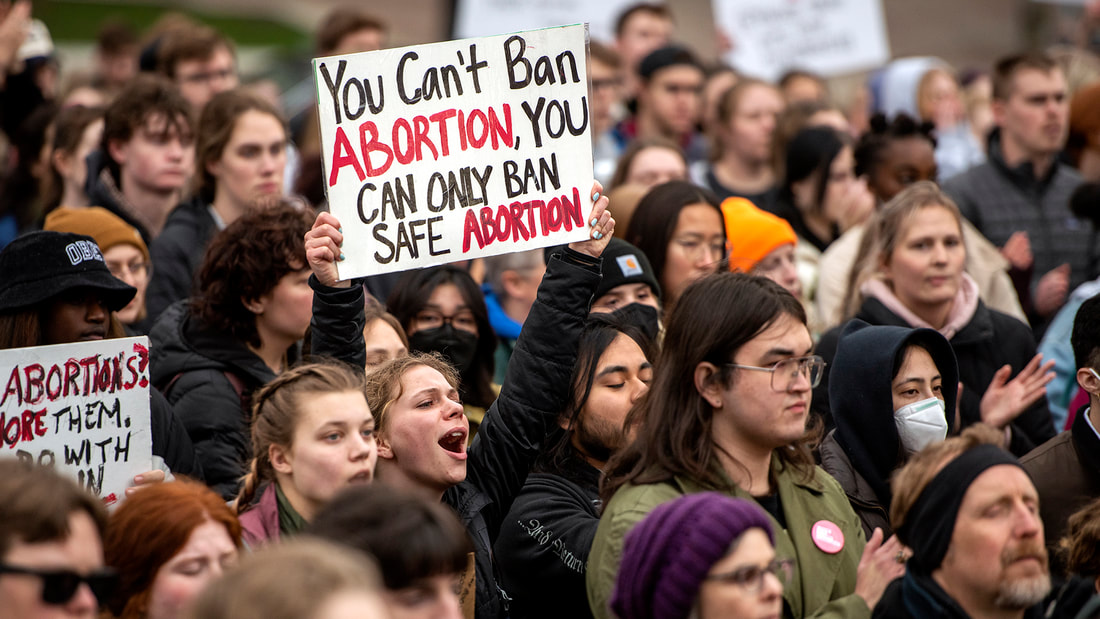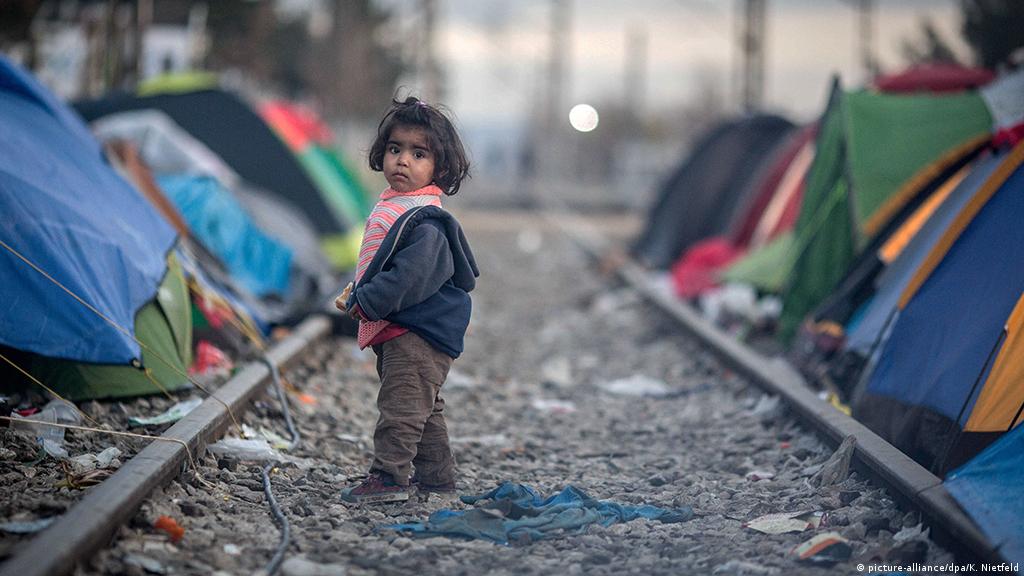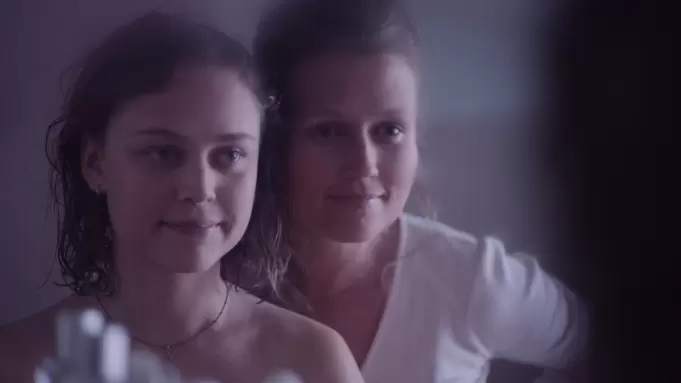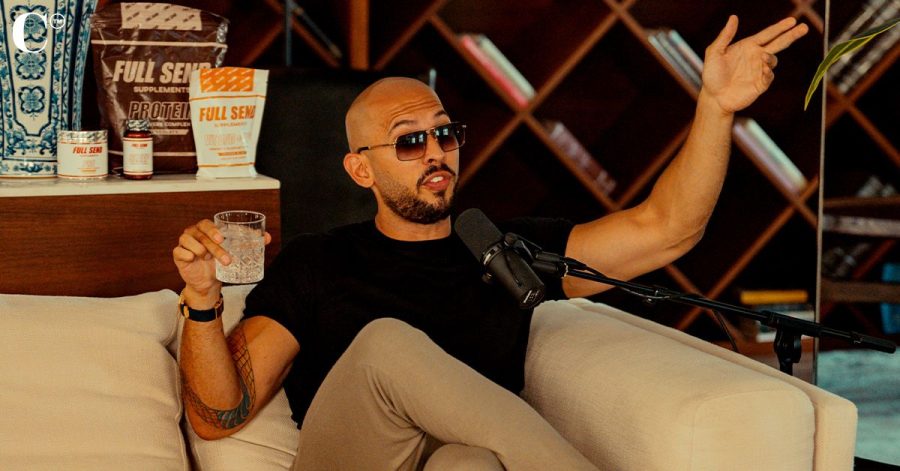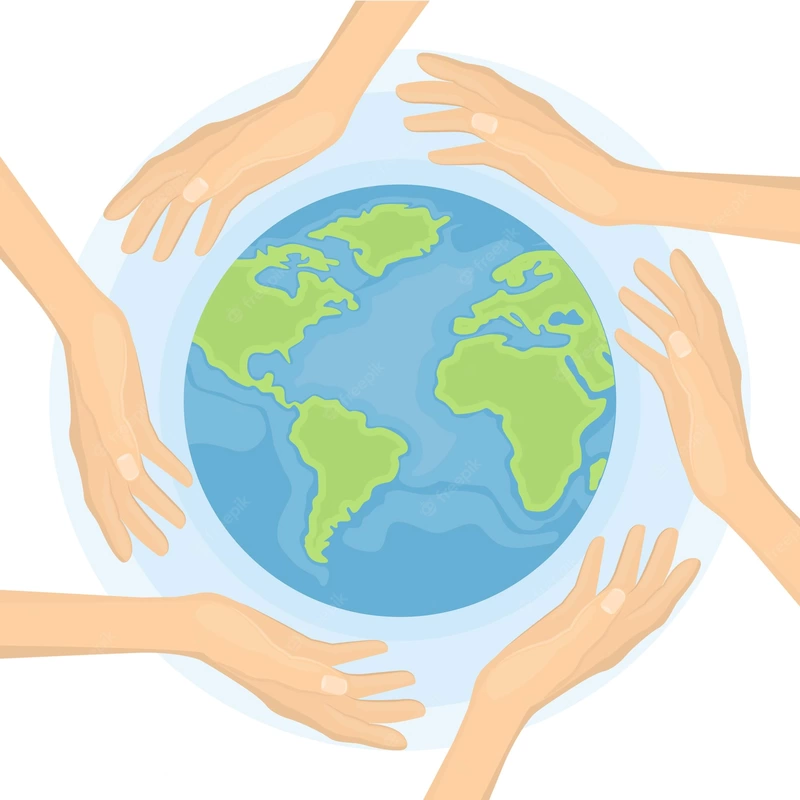Head Covering Prescribed by Law
While Iran today is a male-dominated country, before the 1979 revolution the state did not impose a uniform dress code on women; women were free to choose whether to veil or not. Within weeks of the revolution, however, the Islamic hijab became compulsory. But most women, especially those of the younger generation, rejected this attempt by the state to dictate how they should dress. When they took to the streets of Tehran to protest, they were attacked by vigilantes and the police did nothing to stop the attackers.
Since then, the women have ignored the dress code in small and increasingly brazen ways, and they have paid for it. Under the law of retribution, adultery is punishable by stoning and violating the hijab by seventy lashes. Many young and middle-aged women received this punishment – a blatant example of how the state uses physical violence against women.
The arrest and death of Mahsa Amini on 13 September is one of the latest cases of violence under these laws.
Inheritance Law and Women’s Treatment in Family
Iranian family and inheritance laws generally favour men over women.
Men can have up to four wives and enter into an unlimited number of "temporary marriages", while women can have only one husband. A female virgin of any age who wishes to marry needs permission from her father or grandfather or a court. Men can divorce their wives for any reason or no reason, while women have the right to divorce only under certain conditions. Muslim women, unlike Muslim men, are not allowed to marry non-Muslims.
In divorce cases, Iranian law usually grants custody of children over the age of seven to the father, while women are usually granted custody of children until they are seven years old.
Women need their husband's permission to obtain a passport and travel abroad. Husbands are legally allowed to determine where the family lives and to prevent their wives from practising certain professions.
According to the law, the widow of a childless man is only entitled to a quarter of his estate after his death. If he has children, the widow's share is reduced to one-eighth. A widower, on the other hand, inherits half of his childless wife's estate and a quarter if she has children. If a man had several wives, the normal widow's inheritance is divided equally among them.
Each son of a deceased person inherits twice as much as each daughter.
Social Gender Segregation
Under Iranian law, women and men must sit in separate areas on public transport, at public weddings and in university classes, attend separate schools and use separate entrances to some airports, universities and public buildings. Women are generally not allowed to attend men's sporting events – such as football matches – in public stadiums.
Denial of Economic, Political, and Cultural Opportunities
Iran ranks second worst in "Economic Participation and Opportunities" for women among the 146 countries surveyed in the World Economic Forum's (WEF) Global Gender Gap Report 2022 – only ahead of Afghanistan and Pakistan.
The percentage of women in Iran's labour force has remained in the mid-teens for years, while the official unemployment rate for women is around 20 per cent, about twice that of men.
The Iranian regime prohibits women from working in some government offices, including the judicial organisation of the armed forces. Iranian law gives husbands control over their wives' work opportunities. In some cases, husbands are legally allowed to exclude their wives from work, and some employers hire women only with their husbands' consent.
Iranian law offers women insufficient protection against sexual harassment in the workplace. The law also does not prohibit discrimination in hiring on the basis of sex.
The regime also bans women from nearly 80 fields of study, from engineering, computer science and nuclear physics to economics and English literature.
Among the 146 countries covered by the WEF's Global Gender Gap Report 2022, Iran ranks fifth worst in terms of women's "political participation".
In practice, women are not allowed to serve in the top ranks of Iran's leadership, including as supreme leader or as a member of the Guardian Council. The Guardian Council continues to bar women from registering as presidential candidates, including all 40 who planned to run in the 2021 elections. Women are also barred from serving as judges.
There are no women in President Raisi's cabinet, not even as deputy ministers. Only one of Iran's 12 vice presidents, who have less power than cabinet ministers, is a woman. Only 16 women sit in Iran's 290-member parliament, and the Guardian Council bars thousands of candidates from participating in parliamentary elections.
The government frequently censors publications critical of the Islamic Republic and removes material concerning women's rights. The regime also censors or bans films that it believes would spread subversive ideas about women's rights.
Rape
Marital rape is legal in Iran. Iranian law also de facto discourages most victims of non-marital rape from reporting to the authorities. Rape victims who come forward can be charged with offences such as adultery, "indecency" or "immoral behaviour". Accused rapists can only be convicted if several witnesses testify. According to reports, about 80 per cent of rape cases go unreported.
Zahra Navidpour, a woman who had accused Salman Khodadadi, a former IRGC commander and former chairman of the parliamentary social committee, of rape, was found dead in her home under mysterious circumstances in January 2019. Also in 2019, former Iranian vice-president and former mayor of Tehran Mohammad Ali Najafi confessed to the murder of one of his wives and was convicted. However, her family waived the death penalty.
In June 2018, international media reported on protests related to the gang rape of at least 41 women and girls in the city of Iranshahr, a predominantly Baloch province. The regime reportedly tried to deny the cases, in which some of the perpetrators were said to have had links to Iranian security forces.
The regime has downplayed the frequency of the rapes. In 2011, the current President Ebrahim Raisi, then Deputy Chief Justice, claimed, "In our society today, women are safer than in Western society. We have the safest situation in the world, and this is not refuted by corrupt people who violate Sharia law, as such cases are quickly investigated."
Domestic Violence and “Honour Killings”
Domestic violence is not a criminal offence under Iranian law. Penalties for murder by domestic violence or "honour killings" are more lenient than those for other homicides. For example, men convicted of murdering their daughters are sentenced to only three to ten years in prison, rather than the usual death penalty.
The Iranian parliament has still not passed a bill that was drafted more than nine years ago to criminalise gender-based violence. After the bill had languished in parliament for more than five years, the Rouhani government approved it in May 2017 and forwarded it to the judiciary for consideration, but Iran's chief justice postponed the bill for two more years.
Finally, in September 2019, the judiciary approved the law after it had been heavily amended and weakened. The Center for Human Rights in Iran (CHRI) criticised the revised draft law for "failing to provide effective and sufficient safeguards to protect women from violence, and in many cases promoting and supporting stereotypical, discriminatory and sexist views towards women."
The government does not release official statistics on honour killings, but academic research shows that an estimated 375 to 450 honour killings are committed each year. In 2020, 14-year-old Romina Ashrafi was beheaded by her father for eloping with her 29-year-old boyfriend. Fathers who kill their children face a maximum of 10 years in prison; mothers who do so face the death penalty. Due to nationwide outrage over the beheading, Iran's Guardian Council approved a law criminalising emotional or physical child abuse or abandonment, but did not change the 10-year maximum sentence for a father who kills his daughter. In August 2020, Romina Ashrafi's father was sentenced to nine years in prison.
Judicial Punishment
According to the Iranian Penal Code, the age of criminal responsibility for women is only nine lunar years, while for men it is 15 lunar years. Women are punished more severely than men for several offences, including adultery, which carries the death penalty. Most death sentences by stoning for adultery are imposed on women.
Iranian family law also increases the risk of women being prosecuted for adultery. Husbands do not have to cite grounds for divorce, while wives are only entitled to divorce if their husbands sign appropriate contracts, cannot provide for their families, have otherwise violated their marriage contracts, or are impotent, mentally ill or drug addicts.
Reaction to Women’s Rights Activists
Iranian authorities continue to harass, arrest and imprison women's rights activists, sometimes accusing them of national security crimes such as espionage and collaborating with foreign powers to overthrow the regime. The government bans some women's rights activists from travelling abroad.
Since 2018, the regime has detained dozens of people for protesting against mandatory head coverings. The activists have been charged with "inciting prostitution and corruption", among other offences. One of the activists, Shaparak Shajarizadeh, was sentenced to two years in prison and an 18-year suspended sentence after a long detention in which she was reportedly tortured and beaten and held in solitary confinement. Shajarizadeh, who fled Iran after her conviction, claims she was told she would serve her entire 20-year sentence if she continued to engage. In August 2019, a revolutionary court sentenced another hijab protester, Saba Kordafshari, to 24 years in prison.
In April 2019, authorities arrested Yasaman Aryani, her mother Monireh Arabshahi and Mojgan Keshavarz after they posted an International Women's Day video showing her without a headscarf on the metro. In August, a revolutionary court sentenced the three to 16, 16 and 23 years in prison respectively for "spreading propaganda against the system" and "inciting corruption and prostitution". An appeals court upheld their sentences in February 2020.
A striking feature of the current widespread and ongoing protests in Iran, which are pushing the country to the brink of revolution, is that they were sparked by violence against a woman. It was women who took to the streets with the slogan "Women, Life, Freedom". The regime bizarrely treats men and women equally when it comes to the brutal suppression of these protests. Women, like their male counterparts, have paid dearly for demanding an end to violence, the rule of law rather than religion, equality before the law and economic opportunities for all, not just the men in power. So far, at least 27 women have been killed and a large number of women arrested. According to CNN, women and young girls, as well as men, are being physically abused and raped – another horror story of what they face in prison just for peacefully protesting on the city streets.
